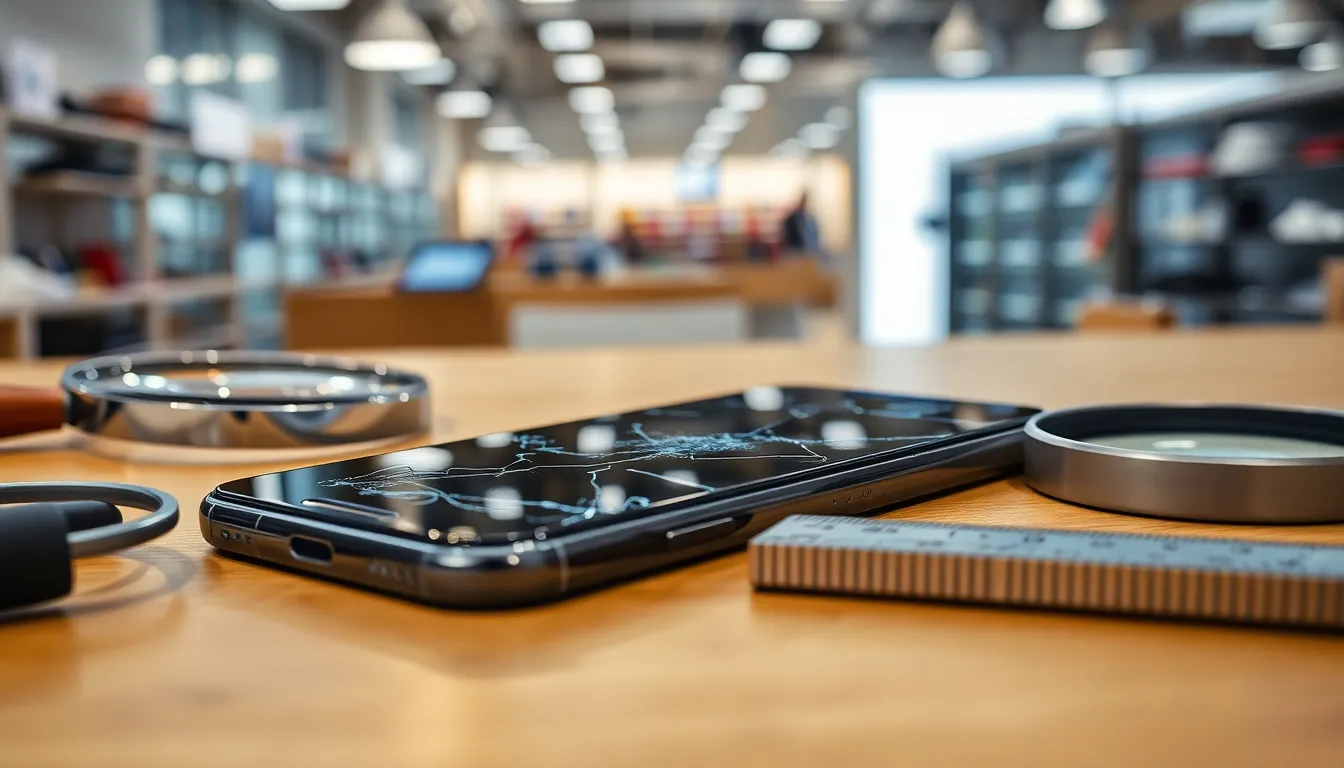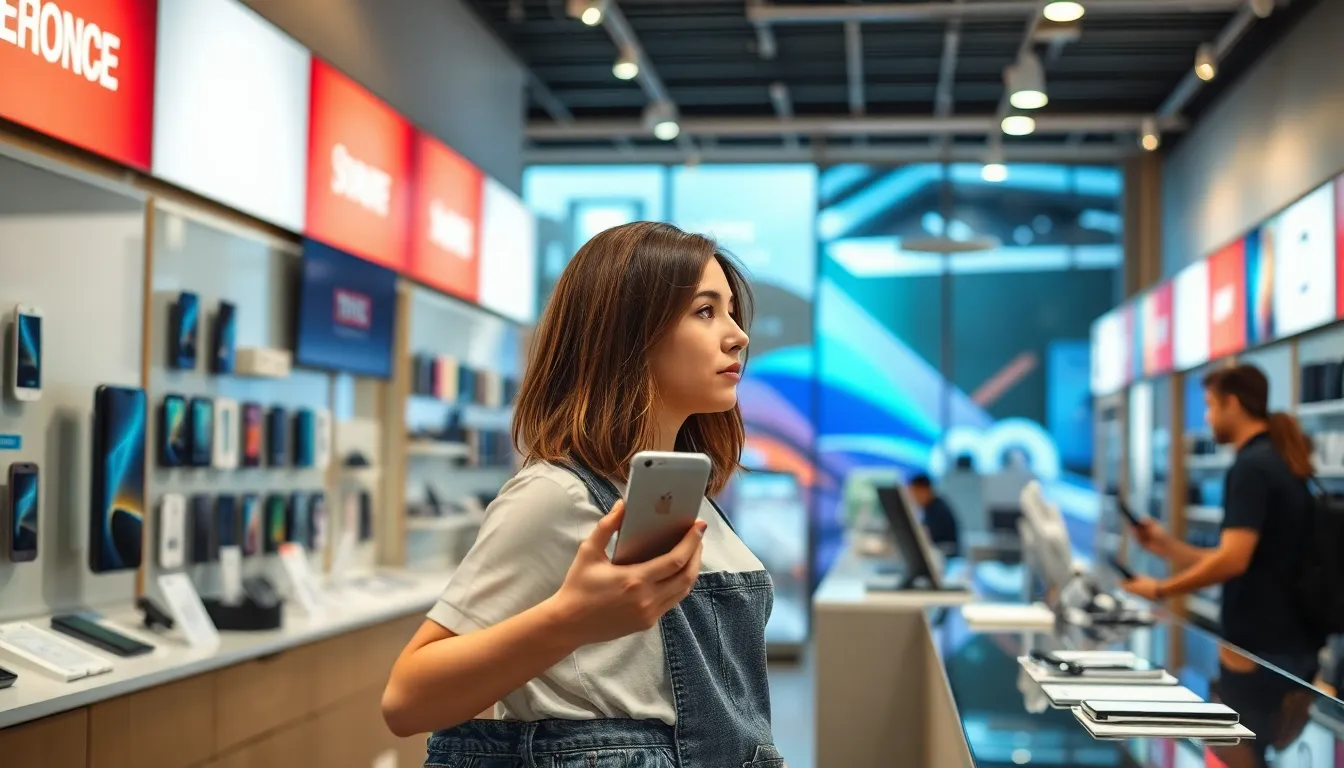In a world where cracked screens and malfunctioning buttons are more common than a morning coffee spill, many wonder if they can trade in their broken iPhone for a shiny new model. Picture this: you stroll into the store, clutching your battered device like a trophy, ready to upgrade to the latest tech marvel. But can you really turn that shattered screen into a sweet deal?
Table of Contents
ToggleUnderstanding Trade-In Programs
Trade-in programs allow customers to exchange their old devices for credit toward new purchases. These programs help mitigate the costs associated with upgrading to current technology.
What is a Trade-In Program?
A trade-in program acts as a service offered by retailers or manufacturers. Customers can hand in their old electronics in exchange for store credit or discounts. Devices in various conditions can often qualify for trade-in. Most companies assess the phone’s condition and offer a value based on factors like age and damage. Many retailers provide online trade-in tools for easy evaluation, streamlining the entire process.
Benefits of Trade-In Programs
Trade-in programs present several advantages for users. First, they reduce the financial burden of purchasing a new device. For instance, receiving credit for an old, broken iPhone can lessen the overall price of a new model. Additionally, these programs promote sustainability by recycling electronic waste. Lastly, customers can enjoy upgraded features and improved performance in new devices without incurring significant out-of-pocket expenses. Many find that trading in devices results in a satisfying and economically sound upgrade experience.
Eligibility Criteria for Trade-In

Trade-in eligibility focuses on several key factors. Customers can exchange their broken iPhones for credit, depending on the device’s condition and model.
Condition Requirements
Devices must have specific conditions to qualify for trade-in programs. Broken iPhones typically need to be functional enough to power on and retain basic functionality. Cracked screens, water damage, or non-working components can affect the trade-in value. Retailers may evaluate the actual state of the device through inspection. Some programs accept phones with significant damage for limited value, while others strictly require fully functioning units. Each retailer sets its own guidelines for acceptable conditions.
Accepted Models
Model eligibility varies across retailers and manufacturers. Most trade-in programs accept a range of recent iPhone models, including the latest series and older generations. Programs often exclude older models or limited editions. For example, customers are likely to find value in trading newer models like the iPhone 12, 13, or 14. Retailers provide a list of accepted devices to ensure clarity. Checking the specific criteria at the time of trade-in supports informed decisions regarding eligible models.
Trading In a Broken iPhone
Trading in a broken iPhone is a viable option for many consumers looking to upgrade. Various retailers and manufacturers offer trade-in programs to assist customers in this process.
Value Assessment Process
The value assessment process begins when customers bring in their iPhones, where retailers evaluate the devices based on condition and functionality. Inspections typically check for key issues like screen cracks, water damage, and battery performance. Functions like powering on and basic features must remain intact to qualify for trade-in. Trade-in values fluctuate significantly depending on the extent of damage. A functioning device fetches a higher value compared to one with extensive issues. Some retailers provide online tools for preliminary assessments, allowing users to estimate their devices’ worth before making the trip to the store.
Options for Non-Functional Devices
For non-functional devices, options vary by retailer and program. Some retailers accept broken iPhones for minimal trade-in value, while others decline them altogether. Customers with severely damaged or non-powered devices often explore recycling programs as an alternative. These programs may not offer credits but promote sustainable disposal. Apple, for example, has initiatives dedicated to recycling old devices, regardless of condition. Other companies may offer store credit or discounts on new purchases for even the smallest status of a functioning phone. It’s essential for customers to check specific retailer policies to make informed decisions.
Steps to Trade In Your Broken iPhone
Trading in a broken iPhone involves a few important steps that can simplify the process.
Preparing Your Device
Assess the phone’s condition prior to visiting a retailer. Ensure it powers on and retains basic functionality, as this is essential for trade-in eligibility. Backing up personal data plays a critical role in protecting important information. Remove any cases or accessories to facilitate the inspection process. Additionally, check for visible damage, such as cracked screens or water exposure. These factors can significantly affect trade-in value. Cleaning the device contributes to a more favorable impression during evaluation.
Completing the Trade-In Process
Upon arrival, present the device to a store representative for inspection. The retailer will evaluate the phone based on its overall condition and operational capabilities. Acceptance criteria vary; some programs accept phones with significant damage, while others prefer fully functional units. A trade-in value will be calculated, factoring in limitations if applicable. Customers often receive immediate in-store credit or discounts on new purchases after the assessment. Using online tools beforehand might estimate potential trade-in values. Before finalizing the process, verify that the trade-in terms meet expectations.
Alternatives to Trading In
Exploring alternatives can provide valuable options for broken iPhones. Repairing the device or selling it privately often yields better outcomes than trade-ins.
Repair Options
Repairing a broken iPhone offers a chance to restore functionality. Many authorized repair services fix screen cracks, battery issues, or water damage. Apple’s repair program facilitates the process with certified technicians. Local repair shops may provide competitive pricing for specific repairs. Customers can weigh the costs of repair against the potential trade-in value. A fully operational device tends to fetch higher trade-in prices, making repairs an appealing choice. Repairing can be quick, allowing users to enjoy their devices sooner. If the problem is minor, a self-repair option might be feasible for tech-savvy individuals.
Selling Privately
Selling a broken iPhone privately opens additional possibilities. Online marketplaces like eBay or Craigslist allow individuals to set their prices. Listing the device with clear descriptions and detailed photos can attract buyers. Local buy-and-sell groups on social media often offer quick sales. Price competitive devices according to their condition and market demand. While selling may take longer than trade-ins, it can result in higher returns. Ensure to include any known issues in listings to maintain transparency. Completing the sale directly to a buyer bypasses retailer fees, maximizing profits.
Trading in a broken iPhone for a new model is indeed possible but comes with certain conditions. Retailers assess the device’s condition to determine its trade-in value, which can vary widely based on damage. While some programs accept phones with significant issues, others may require fully functional devices.
Customers should explore all their options including repairs or private sales, which might yield better financial returns. Ultimately, understanding the specifics of trade-in programs and evaluating alternatives can lead to a satisfying upgrade experience while promoting sustainability.




